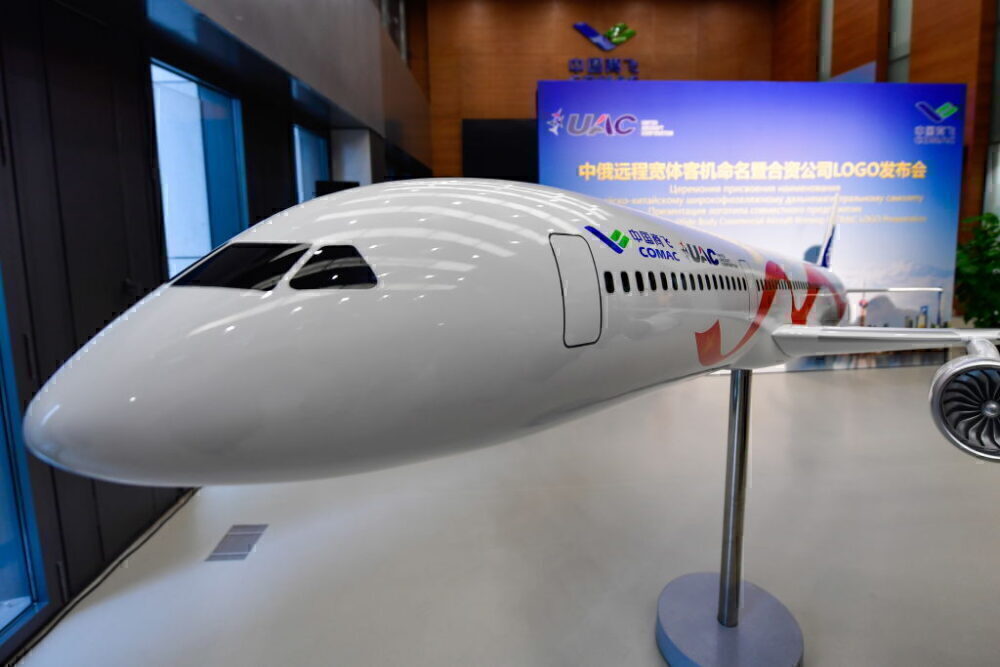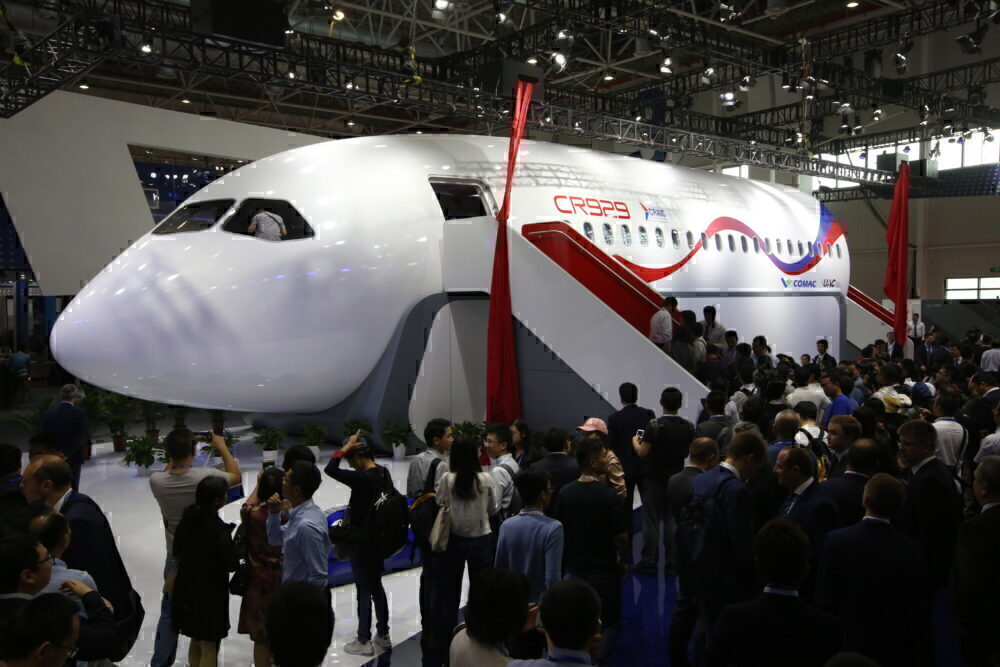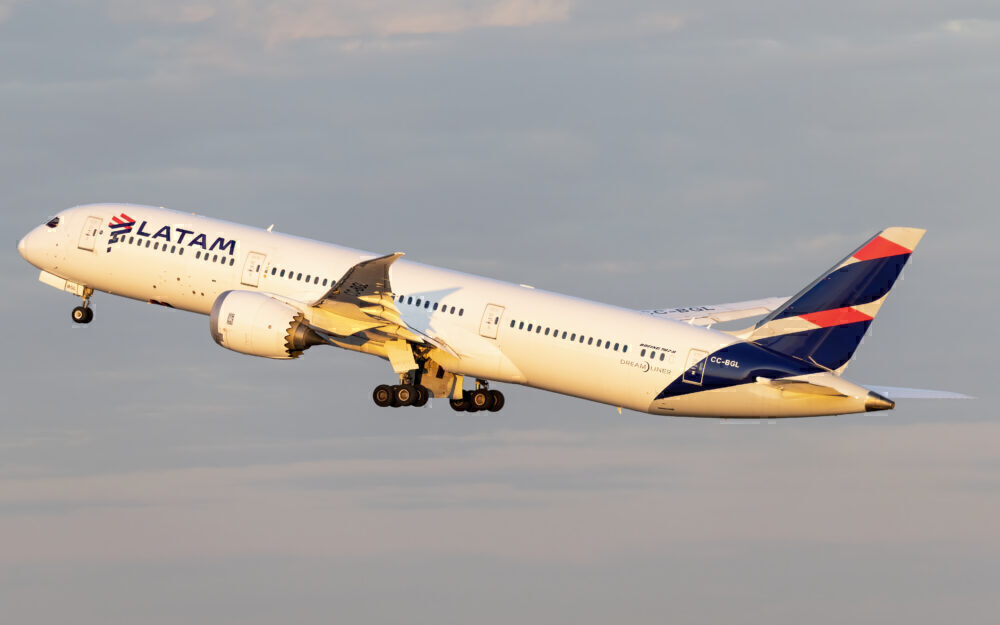Since Boeing acquired McDonnell-Douglas in 1997, it and European manufacturer Airbus have made up an industry-dominating manufacturing monopoly. Smaller manufacturers have found this to be a difficult force to reckon with, particularly in terms of long-range, widebody aircraft. However, a Chinese-Russian joint venture known as CRAIC is aiming to challenge this in the next decade with its proposed CR929 jetliner.

Which manufacturers are involved?
CRAIC is an acronym for ‘China-Russia Commercial Aircraft International Corporation,’ and the joint venture consists of two manufacturers. COMAC (Commercial Aircraft Corporation of China) represents the Chinese side of the project. It has become an established manufacturer through its ARJ21 regional jet. This aircraft type enjoyed record deliveries in 2020.
COMAC is also currently developing a short to medium-haul single-aisle jetliner known as the C919. With this design, it is hoping to make a dent in a market presently dominated by the Airbus A320 and Boeing 737 families. To date, it only has significant orders from Chinese carriers. Despite this, Airbus CEO has stated that it is taking potential competition from the C919 seriously. COMAC plans to launch the C919 later this year with OTT Airlines.
Stay informed: Sign up for our daily aviation news digest.

Russia’s United Aircraft Corporation (UAC) makes up the other half of this exciting joint venture. It was formed in 2006 and comprises several notable Russian manufacturers, including Ilyushin, Sukhoi, and Tupolev.
Irkut also falls under the UAC umbrella, and is known for currently developing the MC-21. Like the COMAC C919, this aircraft is also looking to disrupt the A320 and 737-dominated short to medium-haul market. Russian flag carrier Aeroflot is set to commence services with the MC-21 later this year, nine years after its initial planned launch in 2012.
The origins of the CR929
The CRAIC CR929 project will see these two Chinese and Russian manufacturers work together on a long-haul, widebody jetliner. COMAC had been considering the possibility of producing such an aircraft as early as 2011. At this time, its ideas for the long-haul market included the C929 (290 seats) and the C939 (390) seats.

However, at the time, Russia was also considering how it might produce a successor for its four-engine Ilyushin Il-96. Having ascertained that demand for such an aircraft was sufficient, the two countries formed a joint venture in 2012.
The goal of this partnership was a mass-produced twin-aisle airliner (targeting hundreds of production aircraft) to be developed in around seven years. The project’s cost was estimated at the time to be between $7 billion and $12 billion. By 2015, the parties involved had agreed to target a first flight in 2021, and the first deliveries by 2024.
Two years later, the joint venture officially became known as CRAIC. At this point, the manufacturers elected to target the 2025-2028 period for the CR929’s first flight and deliveries. They hoped that the aircraft would prove cheaper to operate than similar Airbus and Boeing aircraft, by a factor of around 10-15%. CRAIC also aimed to take around a tenth of the Airbus and Boeing-dominated widebody market with its CR929.

Specifications and variants of the CR929
CRAIC plans to produce three different variants of the CR929. The standard version will be the -600 variant. COMAC reports that this will be capable of a range of 12,000 km (6,480 NM) with a capacity of up to 280 passengers across three classes.
A two-class configuration will see the CR929-600’s capacity rise a little further to 291 passengers. Meanwhile, a high-density, one-class layout on the -600 could accommodate between 405 and 400 passengers.
As far as the -600’s other specifications are concerned, it will cruise at a speed of Mach 0.85 (490 knots / 908 km/h). Its physical dimensions are very similar in terms of length and width, with a length of 63.76 meters. Its wingspan measures slightly larger, at 63.86 meters wide. Meanwhile, the height of the -600’s tail will be 17.9 meters.

Having examined the standard CR929-600, it is also worth briefly making a note of the other two variants. The smaller of these, which COMAC calls the “junior version,” will carry the designation of CR929-500. And the third variant? This “senior version” will be a longer, stretched-fuselage version, which, logically, will be known as the CR929-700.
Comparable Airbus and Boeing aircraft
When considering which existing long-haul widebody families the CR929 might challenge, another three-variant design springs to mind. Boeing’s 787 ‘Dreamliner’ family consists of three versions, which also increase in size correspondingly with their designation. These are as follows.
- 787-8 – 56.72 meters long, 242-seat two-class capacity / 359-seat one-class capacity.
- 787-9 – 62.81 meters long, 290-seat two-class capacity / 406-seat one-class capacity.
- 787-10 – 68.28 meters long, 330-seat two-class capacity / 440-seat one-class capacity.

All 787 variants have a wingspan of 60.12 meters. As for the aircraft’s height, the family comes in a little shorter than the CR929. The -9 and -10 variants are 17.02 meters tall, with the smaller -8 coming in 10 centimeters shorter at 16.92 meters.
When looking at the specifications, we can see that the 787-9 is very similar to the CR929-600 in terms of size and capacity. However, the 787-9 can fly for up to 14,140 km (7,635 NM), giving it a significant range advantage over its Chinese-Russian rival. This might cause one to question the extent to which it will provide serious competition for the Dreamliner.
In terms of European competition, the CR929 is most similar in terms of size and capacity to the -900 variant of the Airbus A330neo. However, this too has a more favorable range than the proposed CRAIC aircraft. Indeed, with a typical three-class capacity of 260-300 passengers, the A330-900 can fly for up to 13,334 km (7,200 NM) non-stop. With this in mind, it is perhaps difficult to imagine what might persuade airlines to opt for the CR929.

The next steps
As Simple Flying reported last month, production of the CR929 is set to commence later this year. This is despite the project having encountered some difficulties last October. These stemmed from disagreements over suppliers, and are said to have pushed the first delivery back another year to 2029.
Nonetheless, with production beginning within the next 12 months, CRAIC can finally look forward to a physical manifestation of its CR929. Whether it will challenge the 787 and A330neo (or if there will even be such a gap in the market to do so when it launches) remains to be seen.
What do you make of the proposed CRAIC CR929? Do you think it will pose a serious challenge for the current Airbus-Boeing widebody duopoly? Let us know your thoughts in the comments.
[ad_2]
Source link


